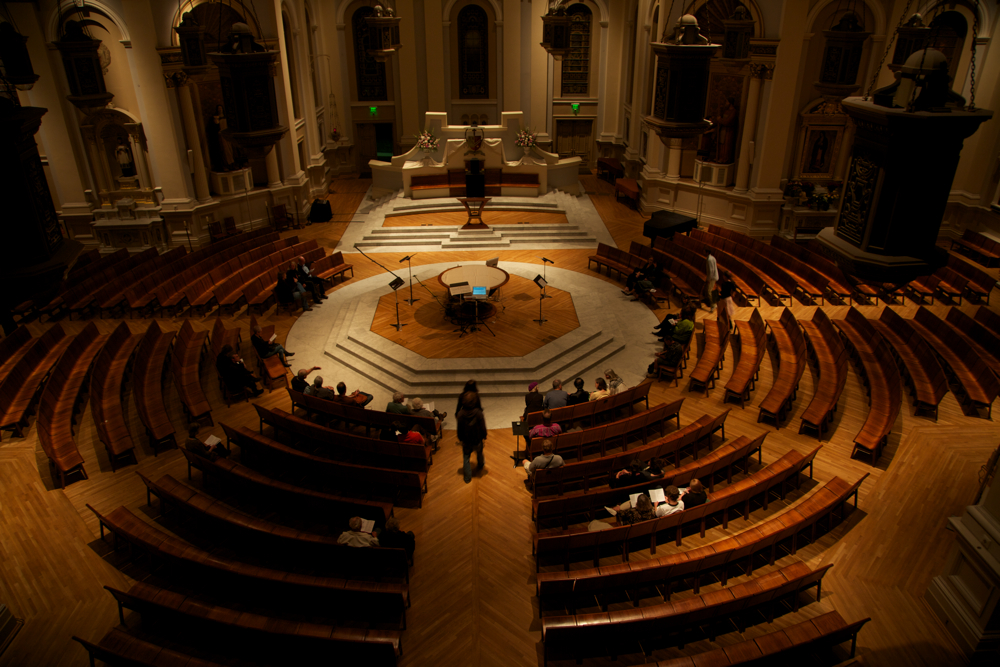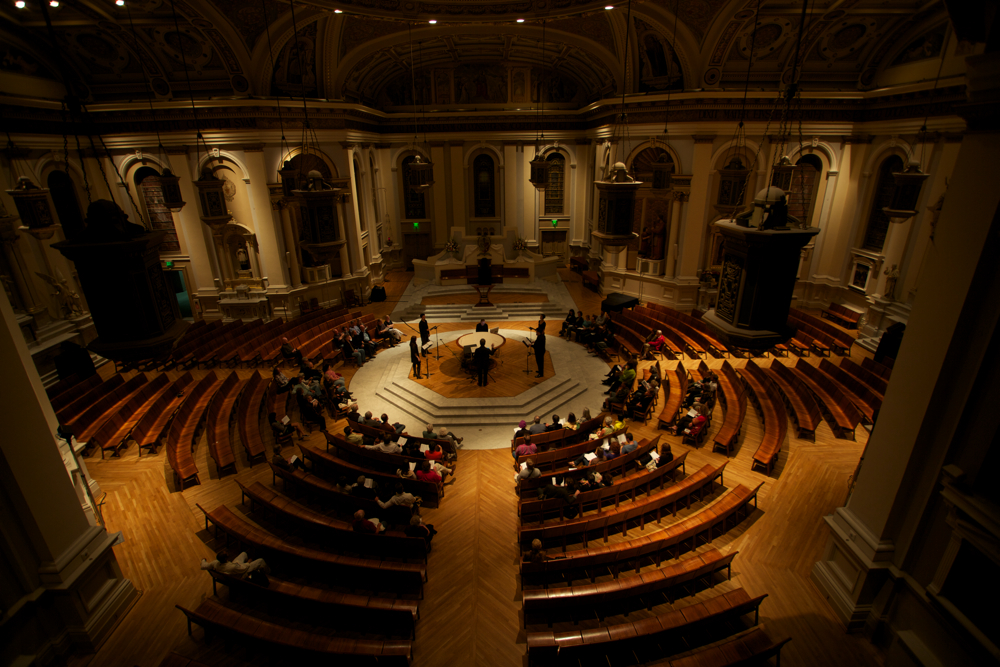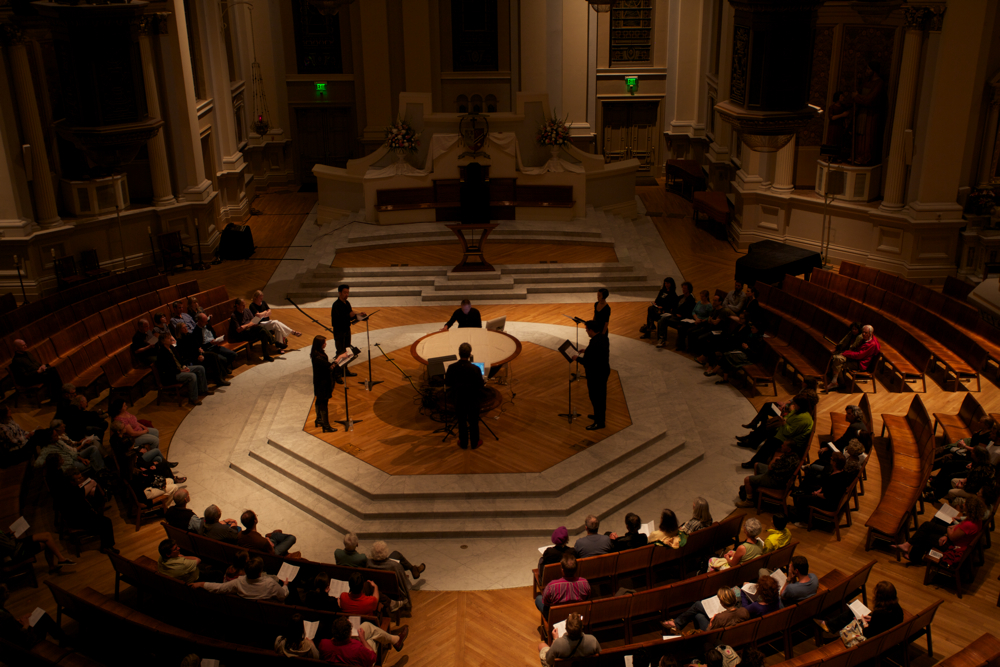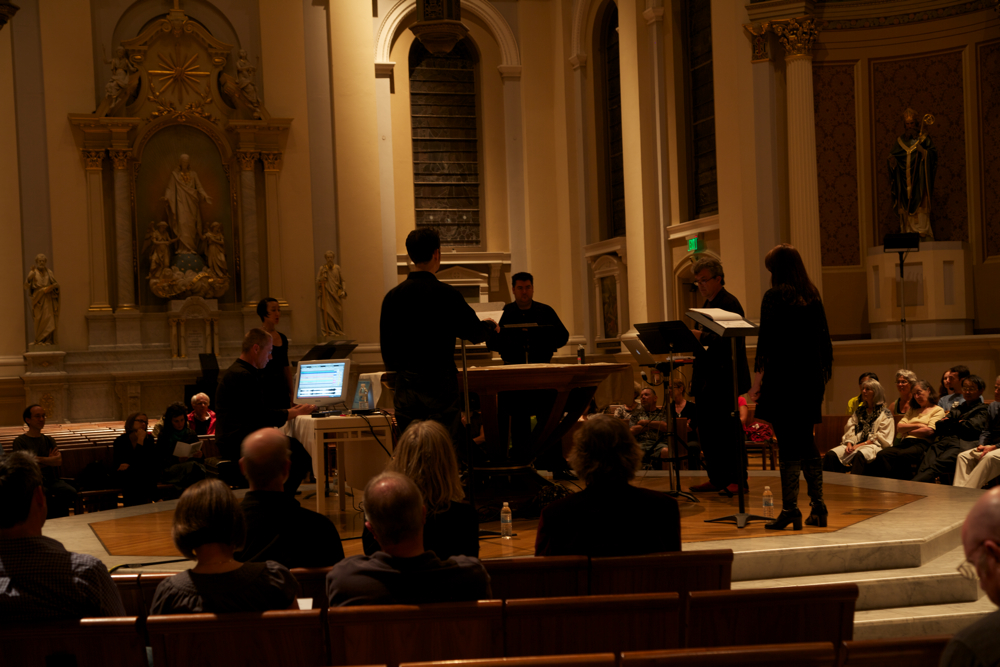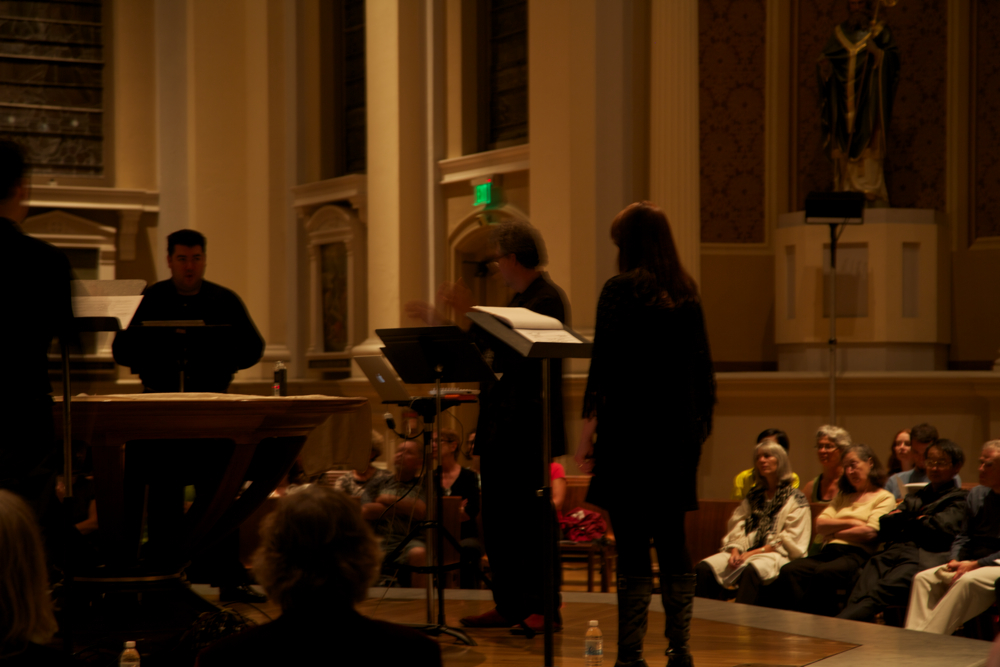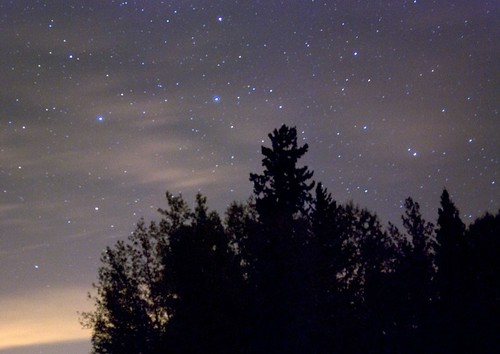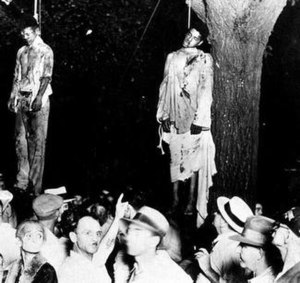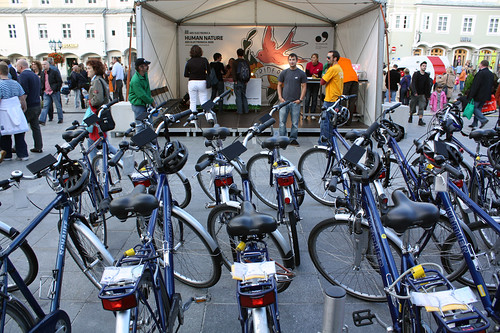Dialog in/of/on the tall grasses
I am thrilled to be in dialog with artist Stephen Vitiello about his exhibition Stephen Vitiello: Tall Grasses, along with Christopher Cox, exhibition curator and Executive Director of the Salina Art Center on Friday, October 29. I hope you can make it, if you are in the area.
“Composer, electronic musician, and sound artist Stephen Vitiello is well-known for his experimental approaches to the phenomenological aspects of sound. His field recordings of ubiquitous atmospheric noises are often mixed with electronics to create palpable soundscapes. The play list for Stephen Vitiello: Tall Grasses provides a layered perspective into Vitiello’s explorations of sound, including a room-size installation looping works from 2004 to 2010; a video collaboration with Brazilian filmmaker Eder Santos; and a new sound piece commissioned by the Salina Art Center expressly for this exhibition that echoes the natural life of Kansas’s remaining tallgrass prairies.”–Salina Art Center
Stephen recently curated a series of midnight concerts at Trinity Cathedral in San Jose for the 01SJ Biennial, and Northern Lights.mn also commissioned him to do a project on the aurora borealis, although nothing sparked, so to speak, on that trip.
The previous day, Thursday, I will also be speaking with R. Luke DuBois about his exhibtion Hindsight Is Always 20/20 at the Ulrich Museum of Art in Wichita.
Strange Fruit

Labor Camp Orchestra album: Songs From The Labor Camp. via NPR
It’s “old news” at this point, but still worth pointing out – and listening to.
Piotr Szyhalski’s Labor Camp Orchestra is an ongoing work that has been the site for much of his public artwork over the past several years, including two installations in at LABoral in Gijon, Spain for the exhibition FEEDFORWARD – Angel of History, which I co-curated with Christiane Paul.
As the website states, Labor Camp Orchestra is
“the Aural Branch of the Labor Camp. Since it’s gradual inception between 1998-1999 Labor Camp Orchestra remains committed to construction of auditory experiences, which follow no singular philosophy, process or idea.”
Back in June, the Labor Camp Orchestra was featured in an NPR story by Lara Pellegrinelli, “Evolution of a Song: Strange Fruit.” The words of the song were originally penned in 1936 under the name Lewis Allan by Bronx schoolteacher Abel Meeropol in reaction to a photograph of the 1930 lynching of Thomas Shipp and Abram Smith in Marion, Indiana.
I don’t think I’ll ever be able to listen to Billie Holiday’s memorable rendition of Strange Fruit the same again after viewing this photograph, which is part of the point of Szyhalski’s “cover” of it via Labor Camp Orchestra – to make visceral the Iraq war. To take us beyond the blaring headlines, patriotic jingoism, and national security fervor to a place that is literally unforgettable. According to Pellegrinelli,
“The group’s version of “Strange Fruit” passes for perky, tidy electronica on first listen. In reality, it emerged from a conceptual thread on events in Iraq and specifically addresses the execution of Saddam Hussein. Based solely on Meeropol’s poem, it juxtaposes his words with a woman reciting the names of fruits in Arabic. An archival recording from the Hussein execution and Koranic recitation plays in the background.”
Listen here.
Ars Electronica.4
A highlight of the final days of Ars Electronica was Rider Spoke, a project by the UK-based collective Blast Theory. Mixing interactive media, installation, live performance, gaming and digital broadcasting, Blast Theory is perhaps best known for Kidnap, in which the winners of a lottery were abducted and held in a secret location for 48 hours. Rider Spoke extends the idea of the group’s search games Can You See Me Now? and Uncle Roy All Around You by asking each participant to ride a bicycle throughout a city after dark, with earphones and a handheld computer mounted on the handlebars.
I struck out away from the start point in the Hauptplatz and, as the sun was setting, pushed up a steep hill overlooking the Danube. While I cycled, melancholic music played and an earnest female voice asked me to reflect on a personal moment in my life and to find a unique “hiding place” where I could record a private response.
The computer screen functions as a positioning device that identifies available hiding places. It also alerts you to nearby source locations of recorded answers by other cyclists. These answers can only be heard on the spot where they were recorded, connecting you to the very recent reflections of anonymous participants. My time on the bike was limited to about an hour — probably due to the battery life of the device — and I came away wanting to be asked more questions and to explore more of the city. Rider Spoke allows for an engagement with the particular context of a city in potentially deep conceptual and emotional ways. My only critique of the system is that it did not pair the listener’s native language with the reflections of other participants speaking the same language.
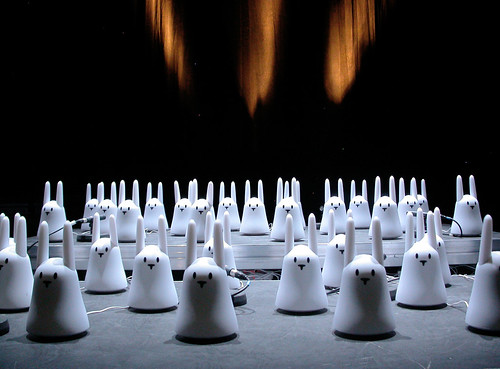
Antoine Schmitt and Jean-Jacques Birgé, NABAZ'MOB at Ars Electronica. Photo: Antoine Schmitt and Jean-Jacques Birgé
I can’t claim to have seen everything performative at the Festival, but did see most of the Pursuit of the Unheard program, comprised of performances by the Prix Ars Electronica Digital Musics prizewinners. NABAZ’MOB by Antoine Schmitt and Jean-Jacques Birga is an opera composed for 100 Wi-Fi equipped plastic bunnies that can be programmed to flash colored lights in their bellies, make twinkly music and swivel their ears. The music and choreography, transmitted via Wi-Fi and founded on repetition and time delay, appeared to be controlled by both the artists and the individual and collective rabbits. An earlier version on video of NABAZ’MOB can be seen here:
Other standouts were Tristan Perich’s Active Field for ten violins and ten-channel 1-bit music, performed by Perich and members of the Bruckner Orchester Linz and digitally-created, curtain-like visuals by Kenneth Huff accompanying Alan Hovhaness’ Lousadzak (Coming of Light). Bill Fontana’s Speeds of Time, a deconstruction of the sounds of Big Ben, was heard outdoors at Bruckner House (also as an installation across the river in the Pfarrkirche Urfahr). This arresting piece is a 12-hour multi-track recording made of a sound sculpture installed at Westminster, which derived from sensors and microphones attached to the clockwork mechanism and near the bells. A recording of Speeds of Time can be heard here.
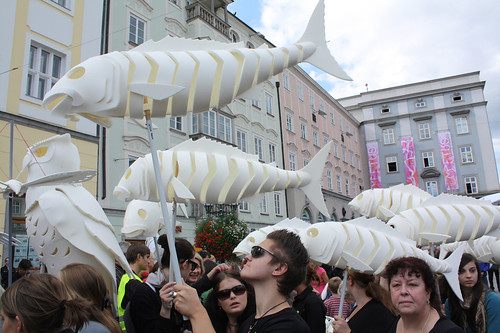
Flut Fish at Ars Electronica. Photo: Bruce Charlesworth
FLUT (Flood), mentioned in an earlier post, happened on September 5. The lead-in to the main performance was Die Prophezeiung (The Prophesy), during which performers and volunteers puppeted a seemingly endless array of animals made of white upholstery foam. For several hours in the afternoon, everything from snails to T-rexes milled through huge crowds in the Hauptplatz and nearby streets. The puppets were meticulously observed and crafted for shape and movement, and were entertaining to watch. The evening performance, Die Arche (The Ark), took place along the banks of the Danube. This part of FLUT was a mishmash of fireworks, browbeating orchestral music, declamatory videos, floating houses and icebergs. I couldn’t get into it.
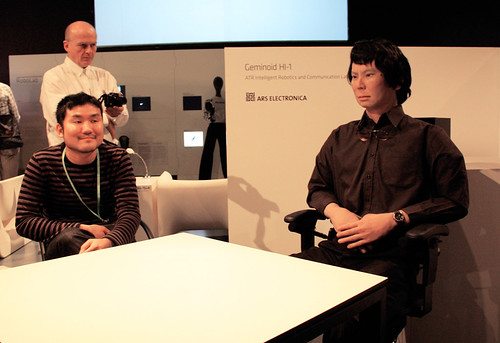
Hiroshi Ishiguro, Geminoid H1-1 at Ars Electronica. Photo: Bruce Charlesworth
Finally, I went to a demonstration of Geminoid HI-1 at the Ars Electronica Center. Hiroshi Ishiguro talked a bit about his creation, a sour-faced robot replica of himself that he uses to remotely give lectures in his stead at the University of Osaka. As Ishiguro went upstairs to sit at the control console, several of us in the small audience moved our chairs close to the table opposite Geminoid, in order to ask questions. Once activated, the robot looked around, its mouth opening and closing like a distressed fish. When someone observed that its rather intense facial expressions made it seem a bit frightening, the robot (Ishiguro on microphone) seemed surprised and a bit hurt. Hard questioning of Ishiguro’s goal to imitate human form and behavior were dodged, as was one query about a romantic scenario between two controllers of opposite-sex Geminoids.
Past Posts
Next time you’re in London
Check out Drift 08, a new annual art exhibition in public space in London.
According to co-organizer Carline Jones
“‘We found that by putting art in unusual places, the general public were more likely to come and have a look – they weren’t as threatened as they can be by the White Cube Gallery space,’ says Illuminate’s co-founder Caroline Jones. ‘Then we went one step further and thought: Why not take the artwork straight out there to the public?'”
The six artists featured in Drift 08 include Craig Walsh, whose Incursion 37:20:15.71†N – 121: 53:09.51†W I commissioned for the San Jose City Hall as part of the 2nd 01SJ Biennial. His hour-long, 12-channel projection on the interior of the Richard Meier-designed city hall was transfixing, and if the other work at Drift is of a similar quality – and I’m sure it is – it will be well worth the trip.
It’s also interesting to note how the ambitions of the 2012 Olympiics may be at work in the culture scene in the UK:
“Drift 08 has been organised with the Corporation of London and British Waterways and there are plans to double it in scale each year, eventually moving up the Lea Valley towards the Olympics site in time for 2012.”
via metro.co.uk
